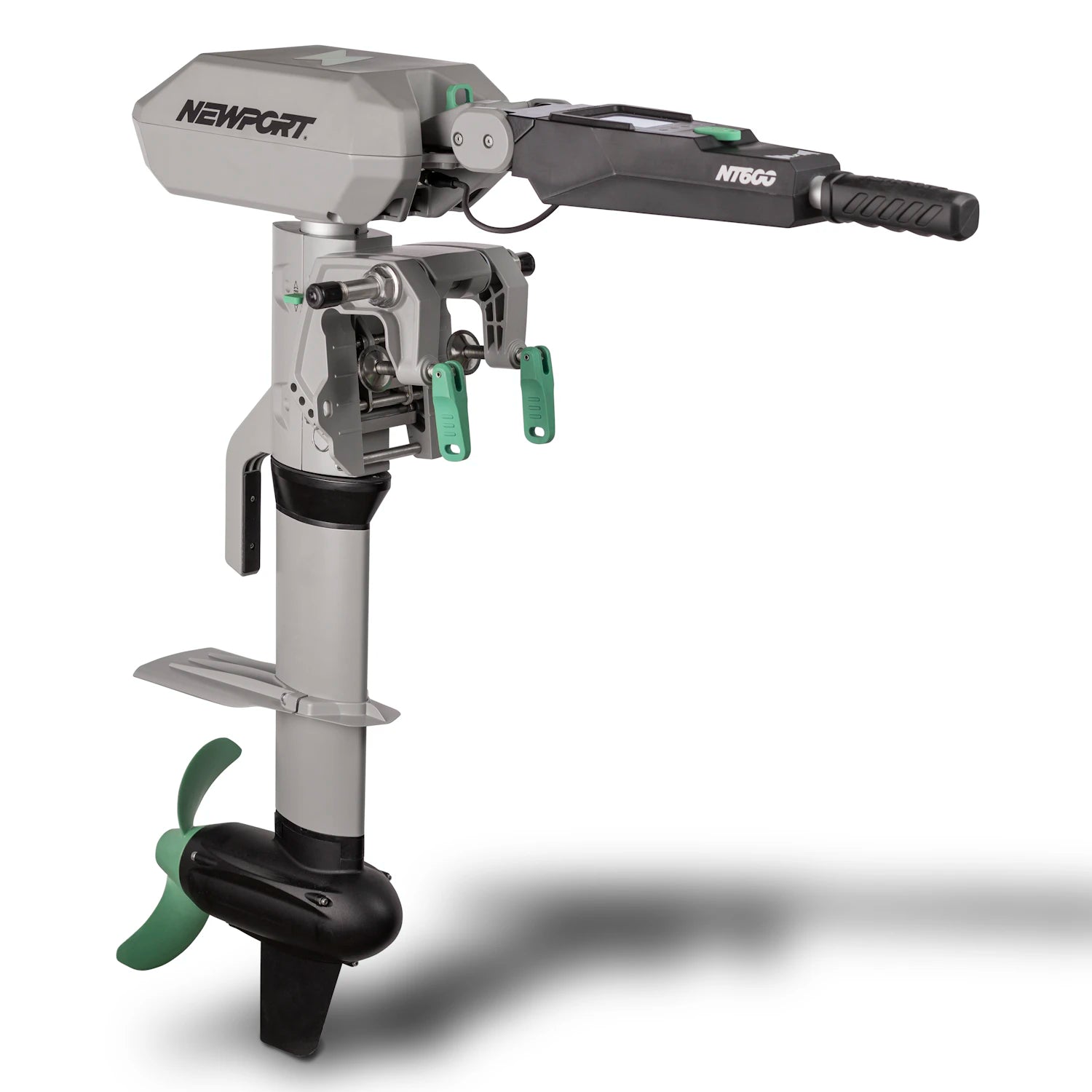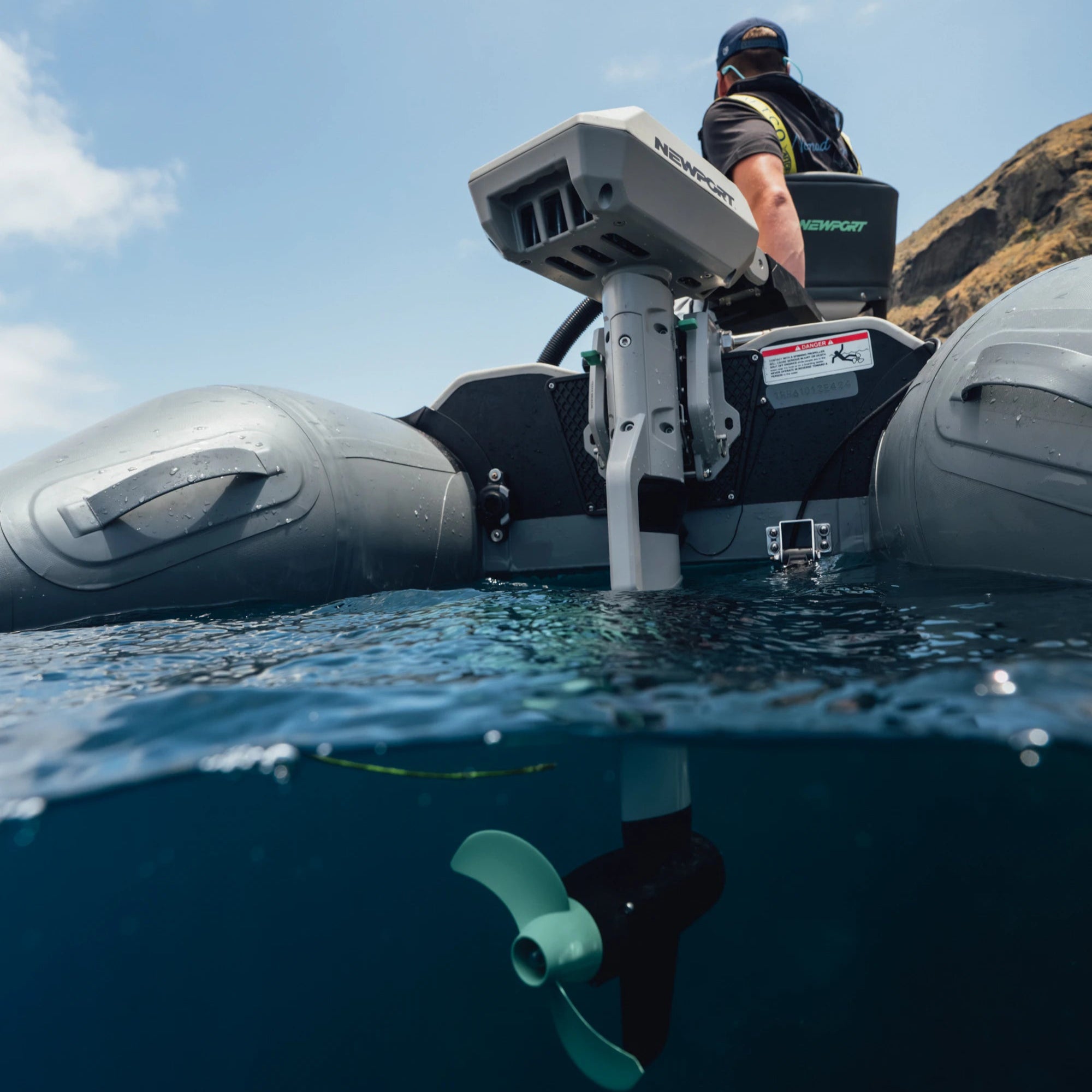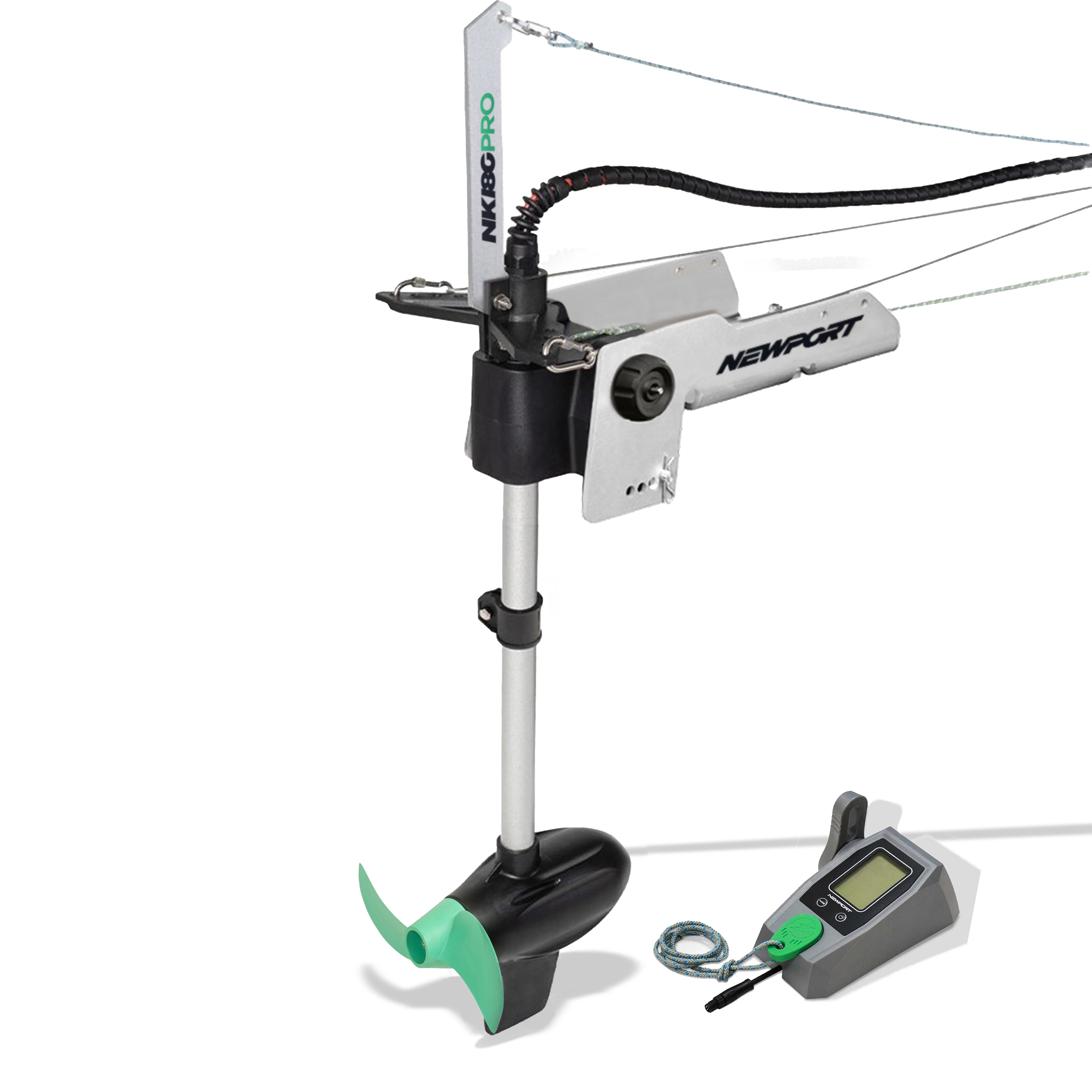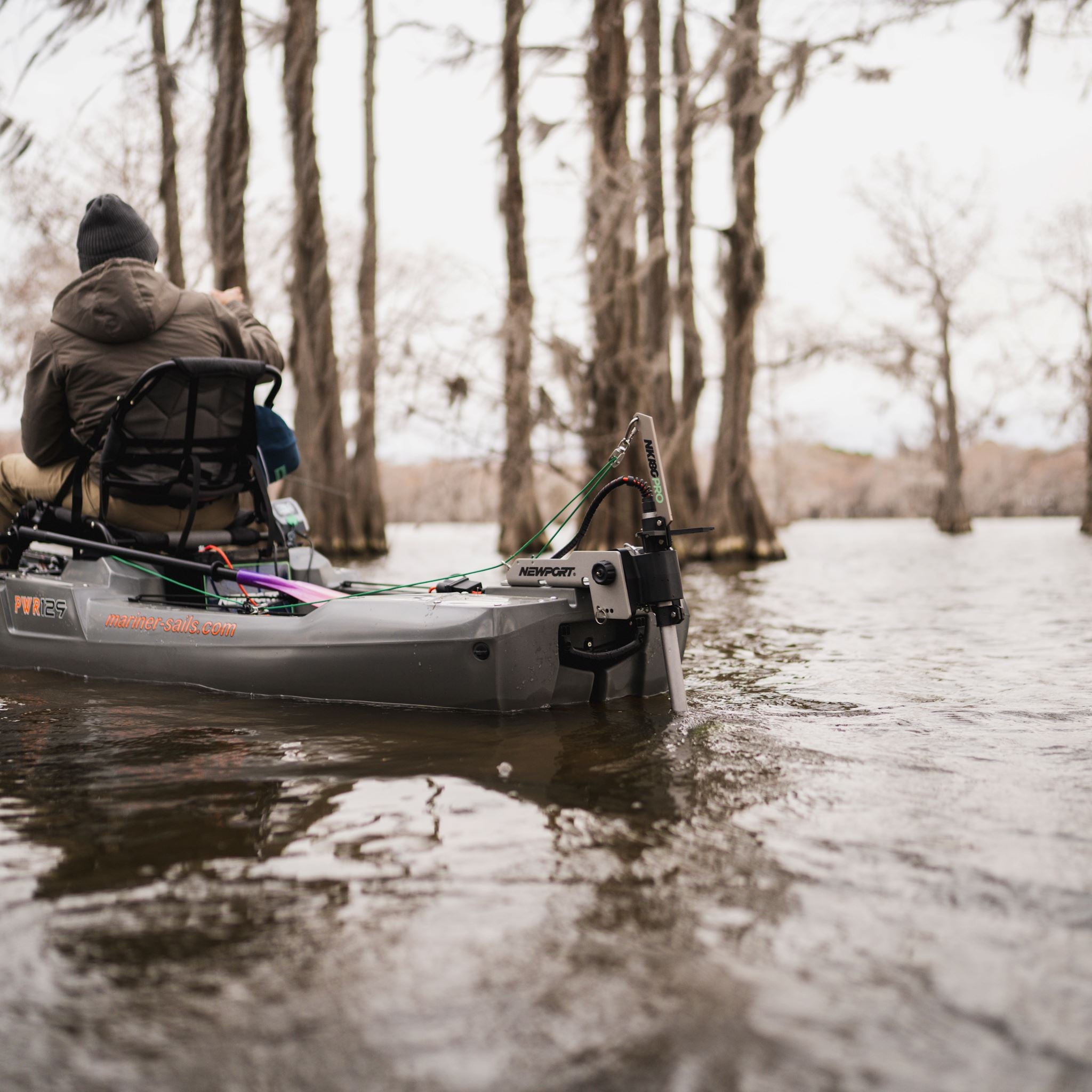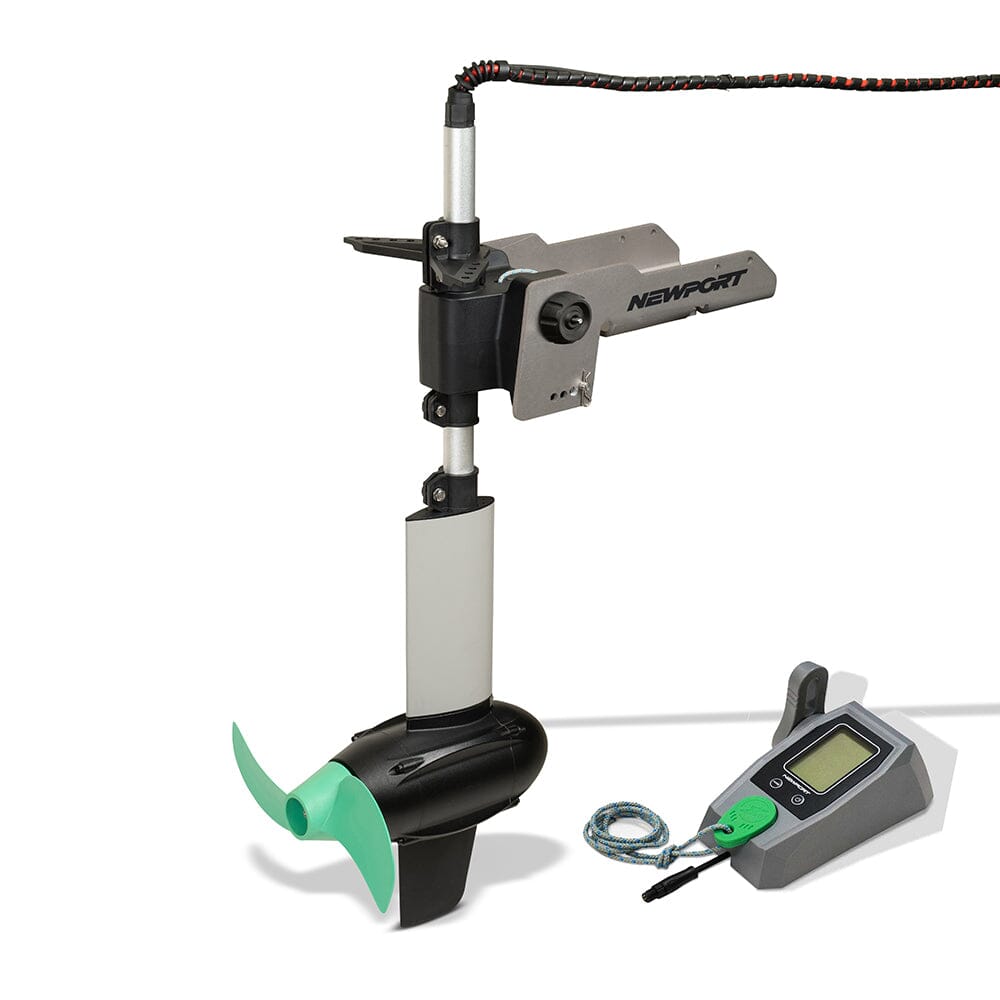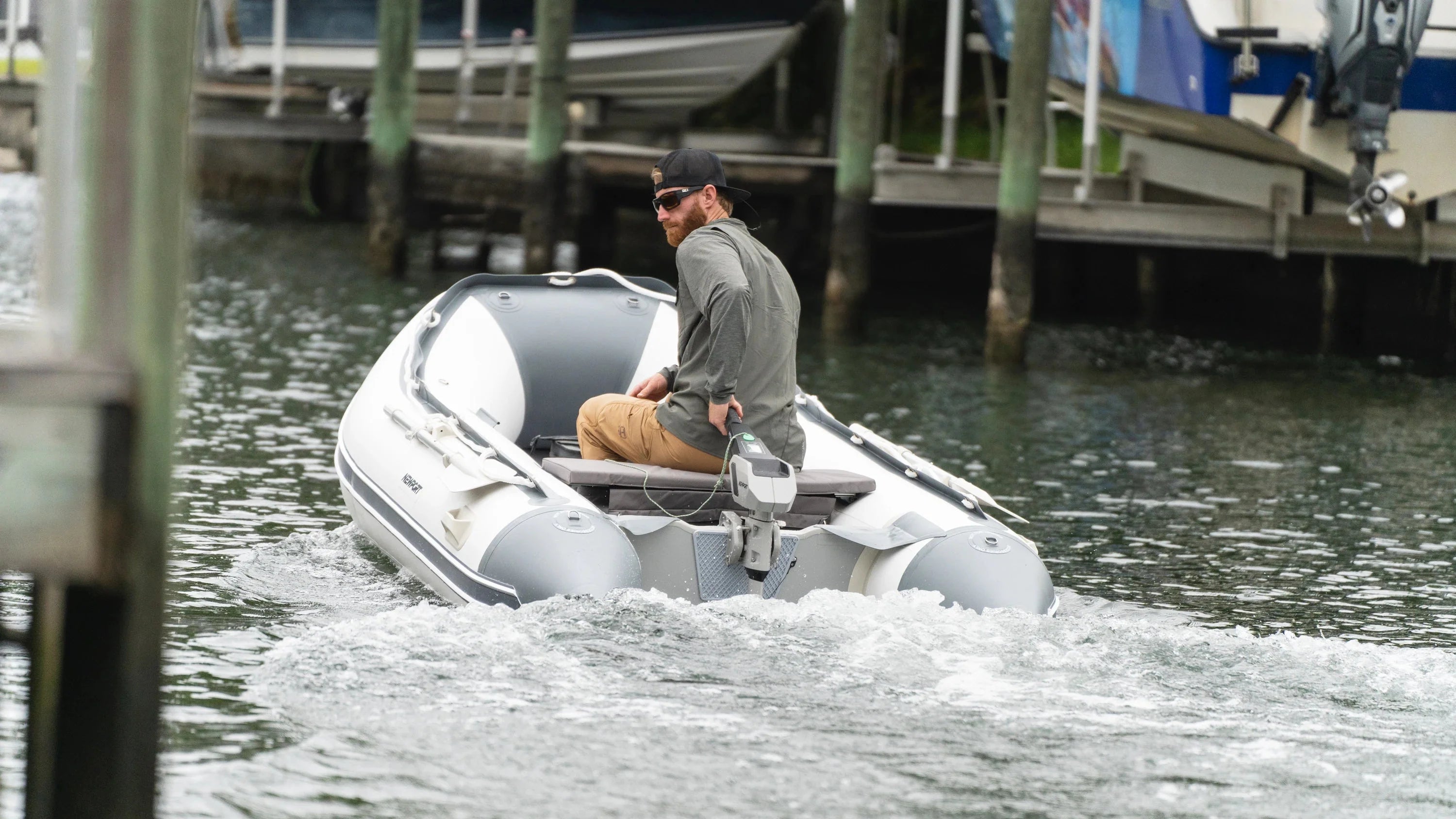Inflatable Boat Cleaning And Storage
Properly cleaning and storing of your Newport dinghy can significantly extend the boats usable life. As a rule, your dinghy should be rinsed with fresh water and allowed to dry completely before storing. In this guide, we will share more recommendations for cleaning and methods for storing your inflatable.

cleaning
Certain chemicals can be very aggressive and harsh on PVC material. We recommend diluting any cleaner you plan to use on your boat with water. This will not only help reduce the harshness of the cleaner but also extend the use of the cleaner, and minimize harmful chemical runoff. We recommend to try using simple warm water mixed biodegradable dish soap for routine cleaning. These two solutes are very easy on your boats material. If more stubborn abrasion marks and stains still persist, follow the recommended steps detailed below.
To properly clean your dinghy you will need the following materials:
-Gloves
-Eye Protection
-Rags
Suggested third party cleaners for PVC inflatable boats:
- Marine Biodegradable Boat Wash with UV Protectant
- Rib & Inflatable Cleaner & UV Protectant by Starbrite
- 303 Marine Aerospace Protectant
- MEK (Methyl Ethyl Ketone)*
*MEK is not a necessary chemical to use to remove stains, but can be used cautiously to help remove tough stains.
AFTER REGULAR USE PROCEDURE:
Begin by removing the wood floorboards or air floor mat from your boat. Unplug your drain valve and position the boat so that the bow of the boat is sitting higher than then stern. This is will make the water run out of the drain plug. Generously spray off the boat with fresh water and towel dry. Allow the boat to completely dry before storing.
AFTER A FEW USES DEEP CLEAN PROCEDURE:
Begin by removing the wood floorboards or air floor from your boat. Make sure you can get access to all the tight spaces that might be hiding dirt, grime, or PVC harming chemicals. Spray down your boat with a generous amount of freshwater. Then using a small amount of warm water and biodegradable soap, work on one section of the boat at a time, saving the bottom for last. Periodically check the status of your rag and change/rinse as needed, if your rag is dirty, you might just be spreading grime on your dinghy instead of cleaning it. Use a new rag to dry the dinghy completely. Make sure you allow the dinghy to dry completely before storing.
EXTREME CLEAN PROCEDURE:
Begin by removing the wood floorboards or air floor mat from your boat. Unplug your drain valve and position the boat so that the bow of the boat is sitting higher than then stern. With the boat at this angle, it will make the water run out of the drain plug positioned in the transom. Use a mix of warm water and biodegradable soap with a soft cloth or scrubber to remove salt residue or small stains. Spray down your boat with a generous amount of fresh water. Follow up with using the Rib & Inflatable Cleaner & UV Protectant by Starbrite on any specific areas of your boat that has tough stains. After drying your boat completely, lightly spray 303 Marine Aerospace Protectant on the pontoon tubes to provide a superior UV Protection layer and maintain a like-new appearance. Lightly wipe the boat down with the 303 applied to ensure even application. We do not recommend applying this to your floor surface, it may become slippery.
GET THE TOUGH STAINS OUT/RESTORE:
If you still have stains and marks that will not come out after a extreme clean, use a soft scrubbing pad and MaryKate Inflatable Silicone Free Cleaner multiple times in the small area to penetrate the stain. If you are restoring the boat and need to remove old patches or glue, use Crown Pro Thinner Specialty Thinner that replaces the use of MEK or Toluene. There are a few products you should never use for cleaning your PVC boat surface. They will cause damage to the material and significantly shorten the lifespan of your boat by weakening and discoloring the fabric, and even weaken the adhesives.
- MEK
- Solvents
- Acetone
- Toluene
- Bleach
- Ammonia
- Abrasive scrub pads (such as Mr. Clean Magic Eraser)
- Steel Wool
APPLYING A PATCH
If you are looking to add patch accessories to your boat such as more d ring patch or other mounting options, it is important to prep the surface for the best bond. Lighter chemicals such as acetone or rubbing alcohol can be used. But if the surface is very dirty or old dried glue needs to be removed, using MEK is a special solvent/thinner that can be used very scarcely to prepare the surface of PVC boats. MEK should only be used for extreme applications, it is a very powerful solvent that should only be handled when using protective fumes respirator, gloves and eye protection. Always work in a well ventilated area when working with MEK. Again, when using MEK to prep the PVC surface, use it in very small amounts, over application can dissolve and damage the materials coating. It should be noted that MEK is harsh, so we only recommend this for small areas on your boat and one time use on the surface area. It can be very aggressive on PVC and can damage it over time. After using MEK, clean the spot you were working on with fresh water, inflatable boat cleaner and dry thoroughly.
There are three very important steps to ensure a PVC surface is ready for a new patch to be applied. Follow these steps before applying glue to your boat:
Mechanical Prep: Use fine grain sand paper (180 grit) to prep the surface to create a rough texture for the glue to grab onto.
Chemical: Clean surface with either acetone or rubbing alcohol work great. For extreme circumstances a very small amount of MEK can be used sparingly.
Application: Use 2-part adhesives designed for PVC materials

PROTECTING
When your PVC boat is in direct sunlight, it is exposed to UV radiation. Extended UV exposure breaks down the PVC on a molecular level, destroying the material. Utilizing 303 Aerospace Protectant will help protect your PVC boat against harmful UV deterioration. It is very similar to wax for your car. It will protect your PVC boat and give it a nice shine. That being said, overusing 303 can be equally harmful to the PVC on your dinghy. We recommend using 303 once per year when you are storing your boat or bringing it out for the season. Please follow the manufacturer's instructions for safe use and application.
Start with the same process used for cleaning your dinghy and make sure you are not in direct sunlight when applying 303. Application in the shade is preferable to avoid the protectant evaporating before the PVC material can absorb it. Begin with spraying your boat in sections with small amounts of 303. Do not spray the rag directly and then apply to the boat; you will oversaturate the PVC causing the excess protectant to run off the boat and into the water source you are in. Immediately after, use your rag to start working the 303 into the PVC. Continue buffing until the 303 is completely dry before moving onto the next section. If your rag becomes too saturated during this process, either excessive 303 is being applied or a new rag is needed. The end result should leave your dinghy with a slight shine.
storage
There are two places to keep your boat: in the water and out of the water. Keeping your inflatable in the water will shorten the life of your boat. Storing your boat out of water is the best way to keep it in good condition.

water:
Keeping your boat in the water will expose it to algae, barnacles, rain, sunlight, and extreme temperature changes. Exposure to any or all of these will reduce how long your dinghy will be seaworthy. It can lead to mildew, UV degradation of the PVC, and possibly glue failure depending on the humidity. We understand that most people sail with Newport Vessels dinghies and store them on or around their vessels. Below we will share the best methods for storage and care in and around the water. There are two items that can be very helpful in keeping your dinghy healthy while exposed to the elements: Pettit Antifouling Paint for Inflatables and Dinghy Chaps. Antifouling paint can help prevent the growth of algae, barnacles and all types of marine and freshwater fouling. We recommend the water-based paint for easy application as well as its eco-friendly properties. This paint coat generally lasts 1-2 seasons on your dinghy before the need for reapplication. Its use is highly recommended for customers that store their boat in the water. If your dinghy is constantly exposed to sunlight, its lifespan will shorten considerably. Dinghy chaps are another great item to help protect your dinghy against harmful UV rays, wear and tear of the marine environment. If you expect your dinghy to be exposed to direct sunlight frequently, you should highly consider this item to acquire the full potential of your dinghy.
below deck storage
If you have the room on your vessel, rolling up your dinghy and storing it below deck is a great method for keeping space open on your deck and not worrying about having to tow it behind the mothership. This will keep the dinghy safe from direct sunlight and marine growth. We recommend this as your primary method of storage for getting the best results from your dinghy.

On deck storage
Another approach is storing the dinghy on your deck. It saves time assembling and inflating the dinghy in case of an emergency situation. However, you will have to find the space to keep the dinghy on your deck, protect it against UV rays, secure it to the deck and find a system to safely get the dinghy on and off the deck.
The most common placement is forward of the mast with the boat turned upside down. You will want to make sure to secure the dinghy with lashings and or a ratchet. This will help prevent lateral shifting and any winds or waves from removing the dinghy from your deck. This location usually does not provide any obstruction to the crew except possible visibility issues for the helmsman. Slightly deflating the boat can easily solve this issue.
An easy and efficient approach we have found for getting your dinghy from the deck to the water and vice versa involves utilizing the spinnaker halyard. Creating a bridle and attaching it to the side D-rings allows an even distribution of weight.
Davits
The next best alternative storing method that we recommend are davits. They allow daily users the convenience of storing and launching their dinghy quickly and safely; Most davits only require a single person to operate.You will still have to consider the amount of direct sunlight, possible UV damage and finding space to install the system.
Davits can be installed on the transom, starboard or port side of the ship depending on what is available. You will want to make sure you get a system that incorporates a horizontal bar that locks the two davits together. This will ensure a strong and durable system. While they are convenient, they also have issues that come with them. You will still have to remove the outboard engine before raising your dinghy. Leaving the motor on can put unnecessary strain on the davits and the dinghy. Long voyages in the open ocean are not recommended for keeping your dinghy in a davit system. If there are strong winds or waves while your dinghy is raised, it can shift while it is raised, cause chafing and become a possible hazard. Placing pads, towels or patches where chafing will occur can help prevent this issues. Tying the dinghy diagonally to the davits can help reduce the amount of shifting. If the movement is excessive, storing the dinghy on your deck is advised.

land:
The best place to store you PVC inflatable is out of the water. Whether it is rolled up and packed away or sitting on a trailer, storing your dinghy dry is a smarter place to keep your boat. In either setting, keeping your boat out of direct sunlight and in a climate controlled environment is always the best way to preserve the life and integrity of your dinghy.
Rolled up
If you don’t have a lot of available space, you will likely be rolling up your dinghy for storage. There are steps that you should take when storing your dinghy this way.First, you will want to follow the cleaning and protecting instructions described above. This is extremely important for keeping your dinghy healthy. If you store it wet and or dirty, it could lead to mildew and other growth that can ruin your boat.
Make sure you store your rolled up dinghy in a climate controlled environment whenever possible. Excessive heat, humidity, and uncontrolled temperature changes will negatively affect the adhesives on your boat. Keeping it inside your closet in your air-conditioned house in Florida during summer or in your heated house in Maine during winter are ideal spots.
Below, our instructional videos to help guide you to properly deflate and roll up your Newport Vessels dinghy for storage. This should be done after cleaning and allow your dinghy to dry completely.
Hardwood floor
Air floor
partially inflated
Keeping your boat partially inflated is a great storage method if you have space. Keeping it partially inflated helps save inflation time and keeps rodents from eating through your PVC. Partially inflating your dinghy still has requirements before you leave it.

Remove the floorboards or air floor when keeping your dinghy inflated, you will still need to wash, clean and dry your dinghy before you leave it in storage. Failure to clean your dinghy properly can result in mildew and other growth that can damage your dinghy.
If you are storing your dinghy outside, you will need to keep it free of direct sunlight and rain, the best solution for this is a climate controlled garage, utility shed, or carport. It is not recommended to store your inflated dinghy exposed to the elements, however, if this is your only option, it is necessary to use Newport Vessels UV resistant inflatable boat cover. Use a broom handle or inflated beach ball to pitch a high point in the center, this will drain water off the cover instead of collecting in the middle of the boat. If it is snowing in your area, sweep off the top of the cover.
If you are able to keep it partially inflated while indoors, you will greatly extend the life and help maintain the integrity of your dinghy. Make sure you are keeping it in an area without excessive heat build-up, or exposure to direct sunlight.
Hopefully, you have found this guide helpful and informative. If you have any questions about the guide or need personalized help, please give our California based customer service team a call at (866) 721-0002 or email us at support@newportvessels.com for additional assistance.

